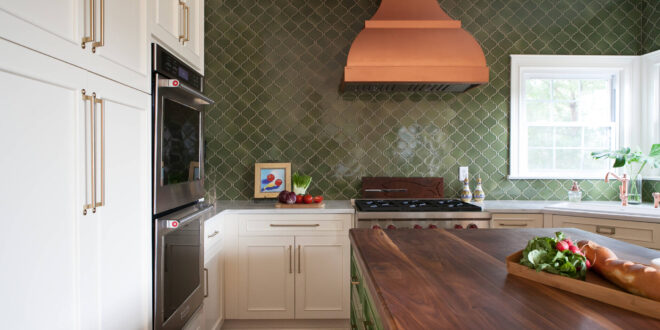Arabesque Tile Kitchen Design: Weaving a Tapestry of Timeless Elegance
The kitchen, often hailed as the heart of the home, deserves a design that reflects both functionality and aesthetic appeal. Among the myriad of tile options available, arabesque tile stands out as a particularly captivating choice. With its intricate curves and elegant silhouette, arabesque tile can transform a mundane kitchen into a space brimming with personality and charm. This article delves into the enchanting world of arabesque tile kitchen design, exploring its history, versatility, design considerations, installation tips, and maintenance advice. Prepare to be inspired as we uncover the secrets to creating a culinary haven that is as beautiful as it is functional.
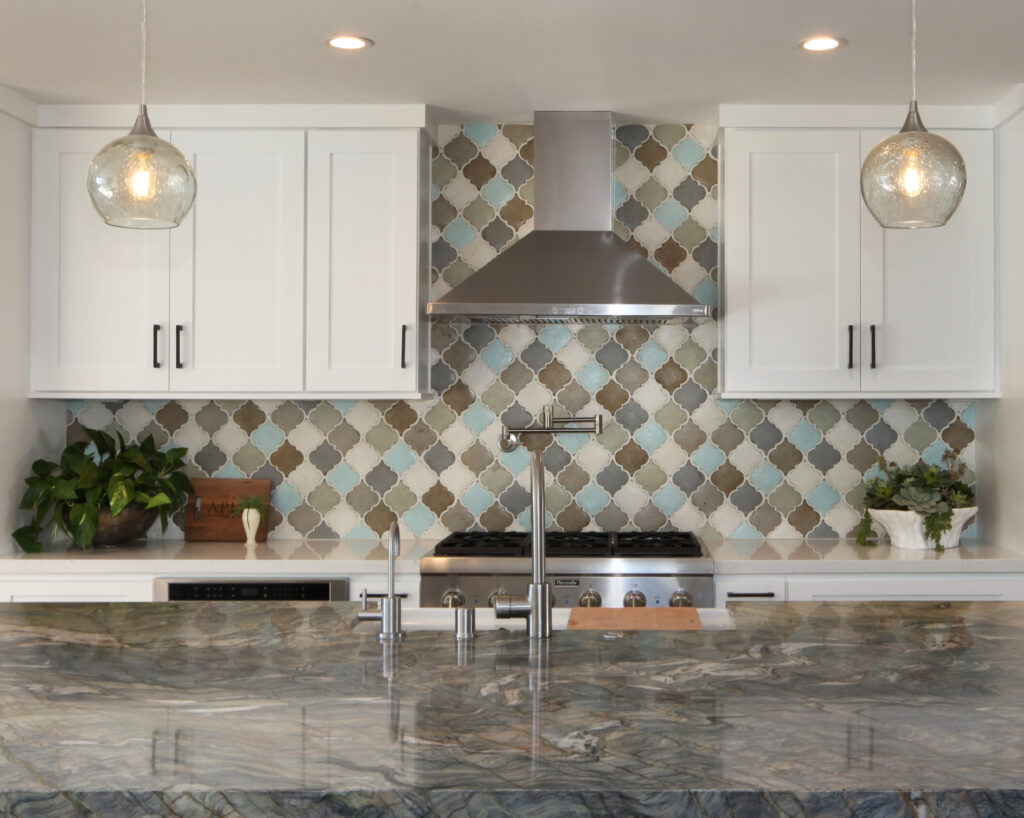
A Journey Through History: The Origins of Arabesque Tile
The story of arabesque tile is interwoven with the rich tapestry of Islamic art and architecture. Originating in the Middle East, the term “arabesque” refers to a complex, ornamental design characterized by flowing lines, geometric patterns, and stylized plant motifs. These intricate designs were initially used to adorn mosques, palaces, and other significant structures, showcasing the remarkable craftsmanship and artistic vision of the era. The arabesque style gradually spread to other regions, including Europe, where it was adopted and adapted into various art forms, including tilework. The enduring appeal of arabesque tile lies in its ability to evoke a sense of history, sophistication, and cultural richness. Its intricate patterns add a touch of artistry to any space, making it a timeless choice for kitchen design.

The Allure of Arabesque: Why Choose This Tile Shape?
Why choose arabesque tile over the countless other tile options available? The answer lies in its unique blend of aesthetic appeal and design flexibility. Arabesque tile offers several distinct advantages:
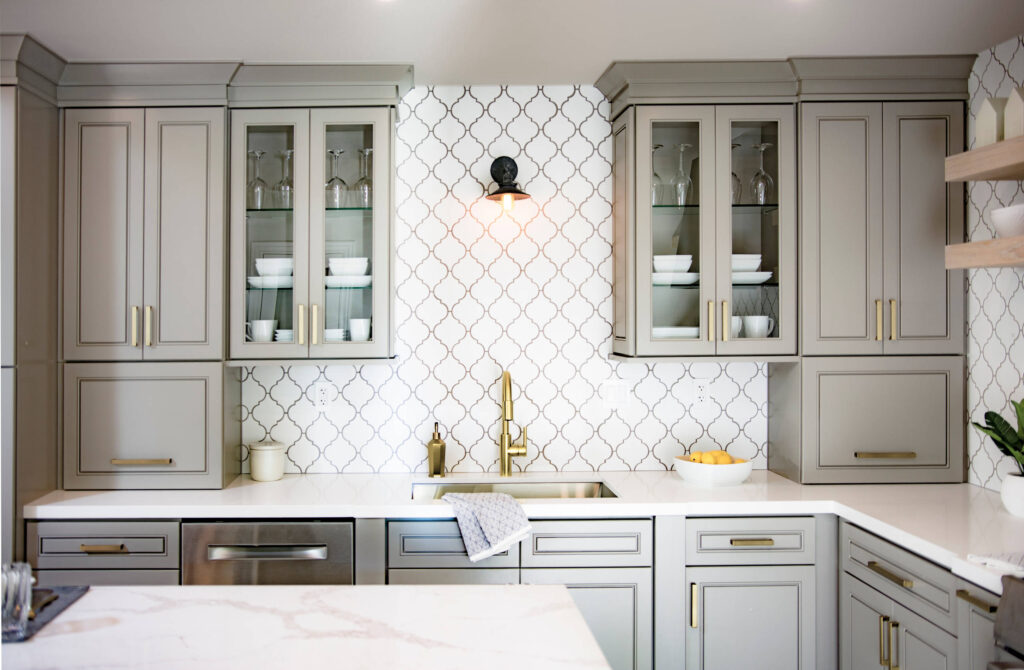
- Timeless Elegance: Its classic shape transcends fleeting trends, ensuring your kitchen remains stylish for years to come.
- Visual Interest: The intricate curves and flowing lines create a captivating visual effect, adding depth and dimension to your kitchen.
- Versatility: Arabesque tile complements a wide range of design styles, from traditional to contemporary.
- Customization: Available in a variety of colors, materials, and sizes, allowing for endless design possibilities.
- Focal Point Creation: Arabesque tile can be used to create a stunning focal point, such as a backsplash or accent wall.
Materials Matter: Selecting the Right Arabesque Tile for Your Kitchen
The choice of material plays a crucial role in the overall look and feel of your arabesque tile kitchen. Here’s a breakdown of some popular options:
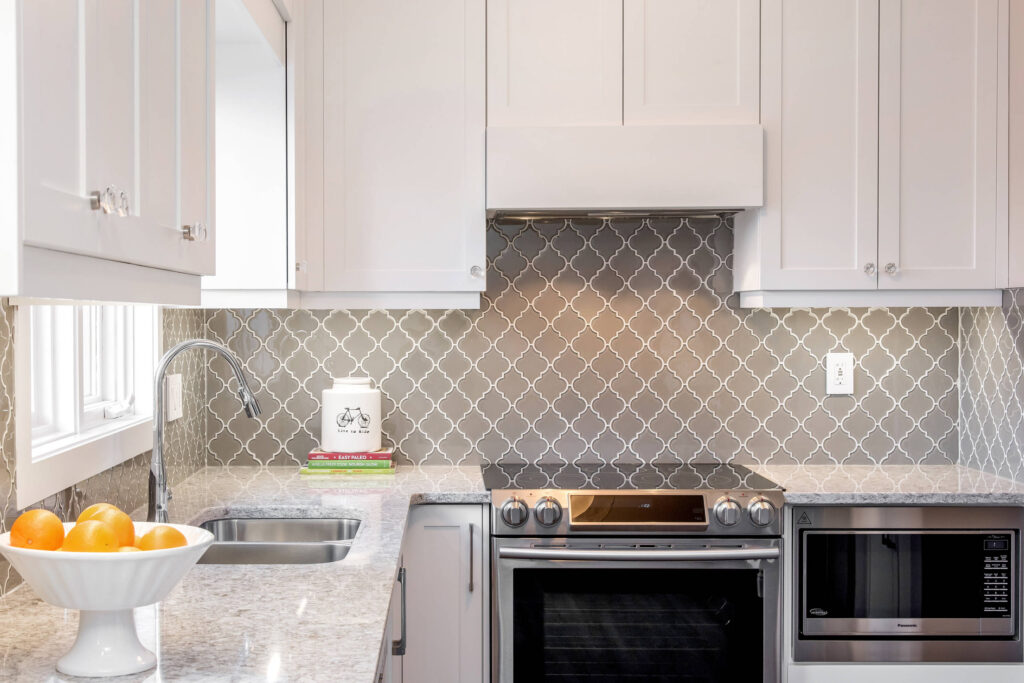
- Ceramic: A budget-friendly and durable option, ceramic tile is available in a wide range of colors and finishes. It’s easy to clean and maintain, making it ideal for kitchen backsplashes.
- Porcelain: More durable and water-resistant than ceramic, porcelain tile is a great choice for high-traffic areas and kitchens prone to spills. Its density also makes it more resistant to staining.
- Glass: Glass tile adds a touch of glamour and sophistication to any kitchen. Its reflective surface can brighten up the space and create a sense of spaciousness. However, it may require more careful cleaning to avoid streaks.
- Natural Stone (Marble, Granite, Slate): Natural stone tile offers a luxurious and organic feel. Each tile is unique, with variations in color and veining that add character to your kitchen. However, natural stone requires sealing and regular maintenance to protect it from stains and water damage.
- Metal: For a modern and industrial look, consider metal arabesque tile. Stainless steel, copper, and bronze are popular choices. Metal tile is durable and easy to clean, but it can be more expensive than other options.
Consider the overall aesthetic you’re aiming for and the level of maintenance you’re willing to undertake when selecting the material for your arabesque tile.
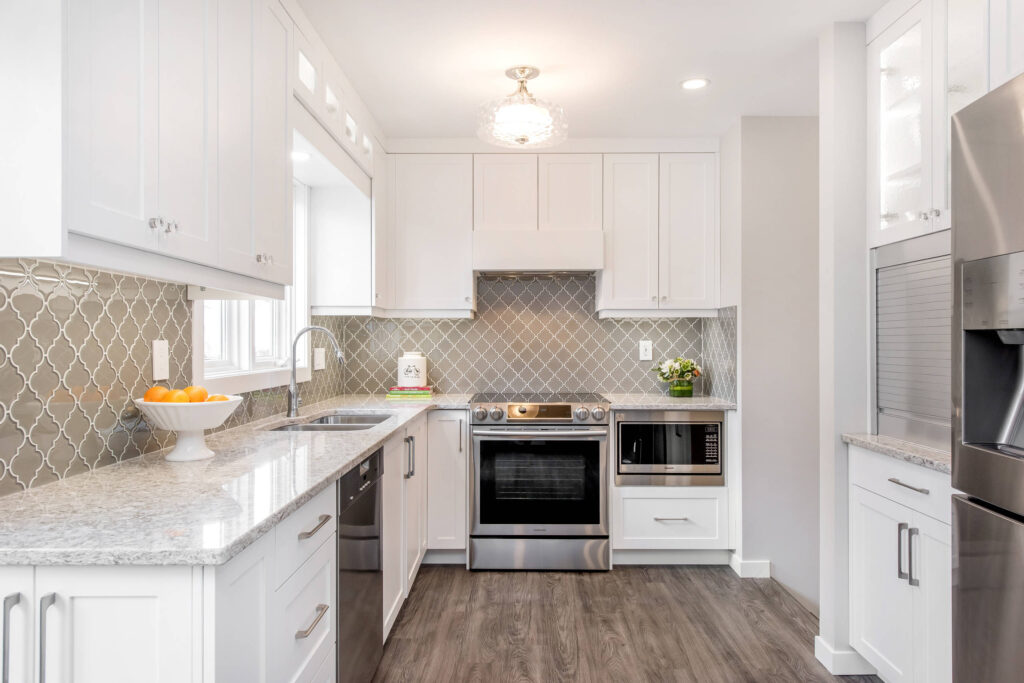
Color Palette Perfection: Choosing the Right Hues
Color is a powerful design element that can dramatically impact the mood and atmosphere of your kitchen. When choosing colors for your arabesque tile, consider the following:
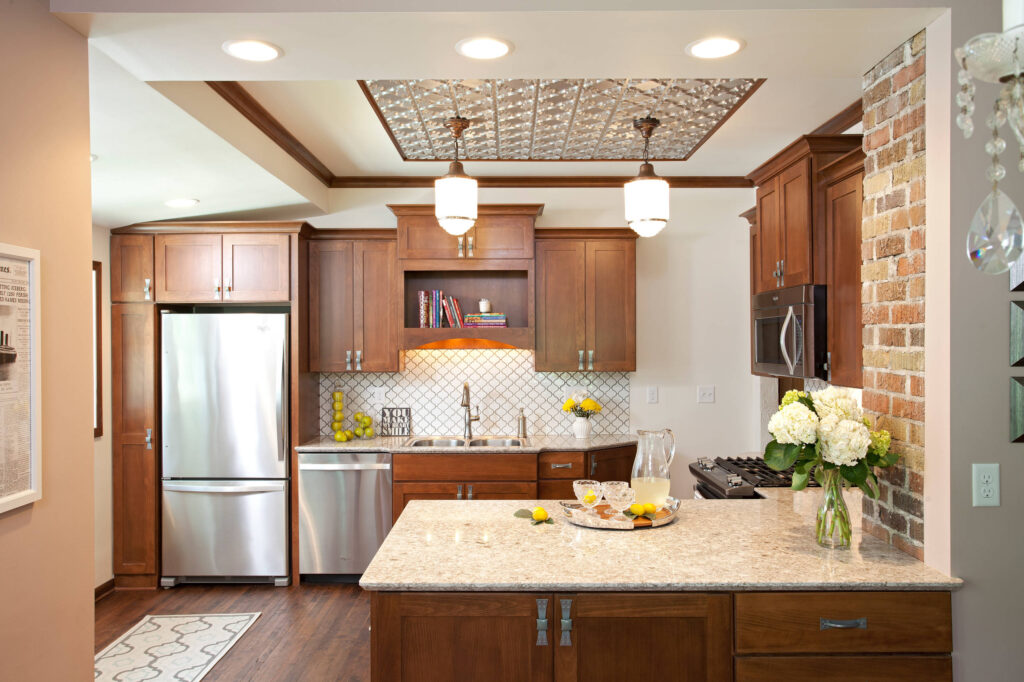
- Neutral Tones (White, Gray, Beige): These colors create a timeless and versatile backdrop that complements a variety of kitchen styles. They also make the space feel brighter and more spacious. White arabesque tile, in particular, is a classic choice that never goes out of style.
- Bold Colors (Blue, Green, Red): For a more dramatic and eye-catching look, consider incorporating bold colors into your arabesque tile design. These colors can add personality and energy to your kitchen, but be mindful of creating a balanced and harmonious color scheme.
- Metallic Accents (Gold, Silver, Bronze): Metallic accents can add a touch of glamour and sophistication to your arabesque tile design. Use them sparingly to highlight certain areas or create a focal point.
- Monochromatic Scheme: Using different shades of the same color can create a subtle yet elegant look. For example, you could combine light gray arabesque tile with darker gray grout for a sophisticated effect.
- Contrasting Colors: Pairing contrasting colors, such as black and white, can create a bold and dynamic look. This approach works well in modern and contemporary kitchens.
Arabesque Tile in Action: Design Ideas and Inspiration
Let’s explore some inspiring ways to incorporate arabesque tile into your kitchen design:
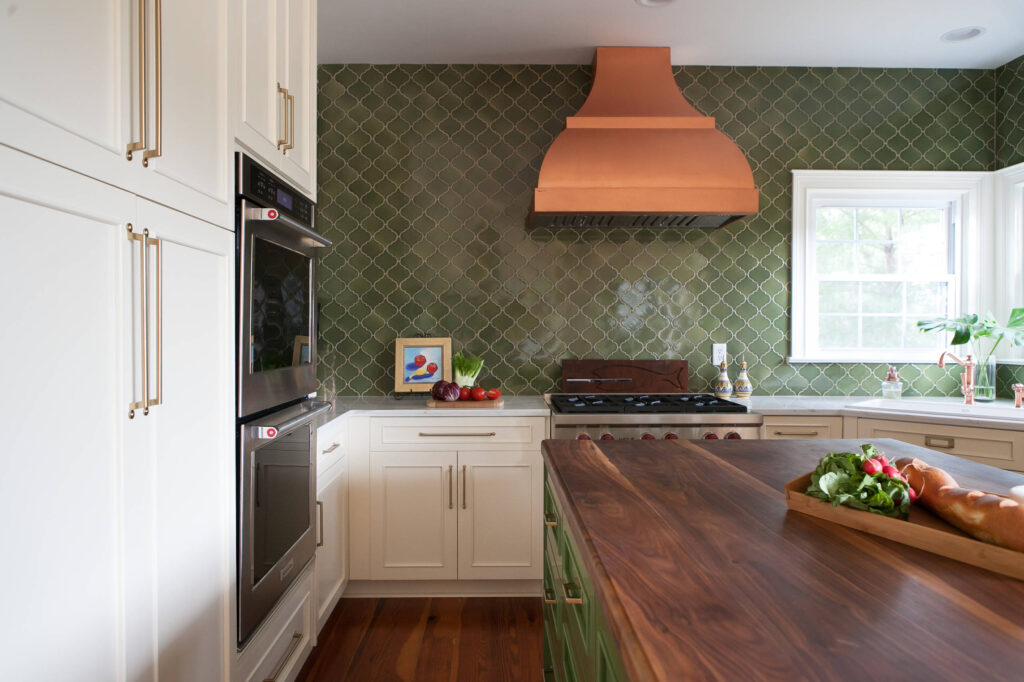
Backsplash Brilliance
The backsplash is the most common and impactful place to feature arabesque tile. It provides an opportunity to add visual interest and personality to your kitchen without overwhelming the space. Consider these backsplash ideas:

- Full Backsplash: Extend the arabesque tile from the countertop to the bottom of the upper cabinets for a dramatic and cohesive look.
- Accent Backsplash: Use arabesque tile as an accent behind the stove or sink to create a focal point.
- Patterned Backsplash: Create a custom pattern using different colors or materials of arabesque tile.
- Herringbone Pattern: Lay the arabesque tile in a herringbone pattern for a unique and eye-catching design.
- Ombre Effect: Use different shades of the same color to create a gradual ombre effect on the backsplash.
Accent Walls: A Statement Piece
For a bolder statement, consider using arabesque tile to create an accent wall in your kitchen. This is a great way to add texture and visual interest to a larger space. Accent walls work particularly well in open-concept kitchens or kitchens with high ceilings. Consider these accent wall ideas:
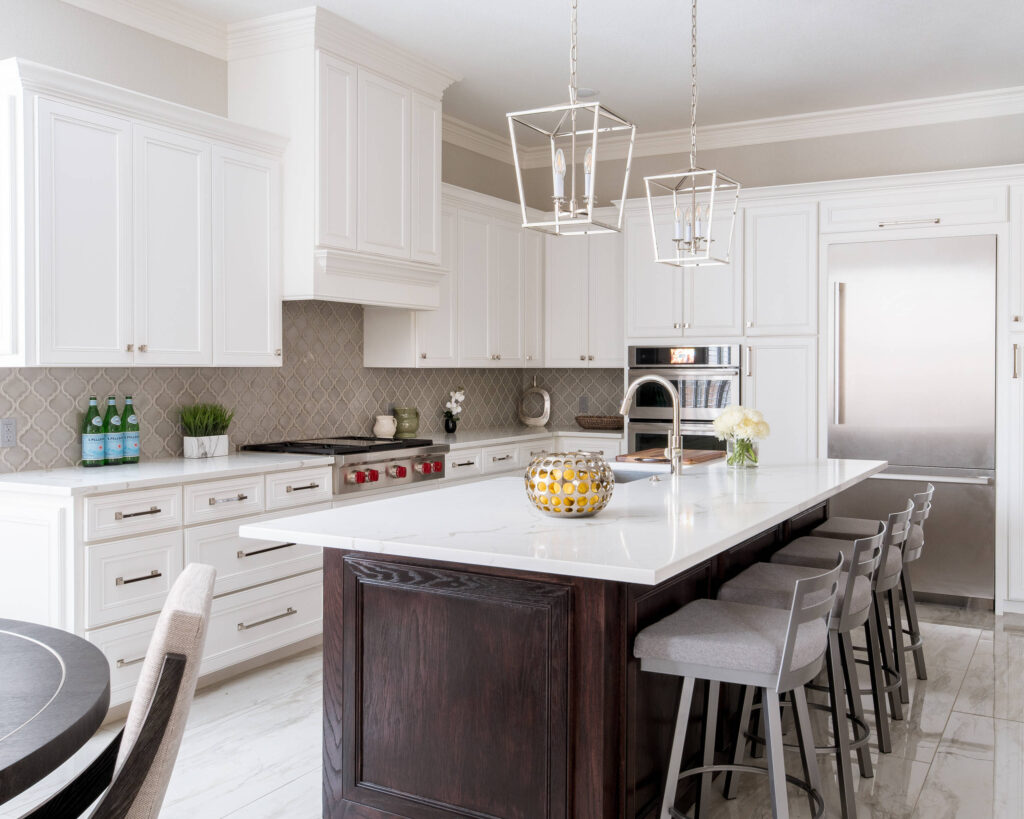
- Full Wall Coverage: Cover an entire wall with arabesque tile for a dramatic and luxurious look.
- Partial Wall Coverage: Create a wainscoting effect by tiling the lower portion of the wall with arabesque tile.
- Framed Accent: Frame a section of the wall with arabesque tile to create a focal point.
Flooring Flair
While less common than backsplash or accent walls, arabesque tile can also be used for flooring. This option works best in smaller kitchens or powder rooms where the intricate pattern can be fully appreciated. Consider these flooring ideas:
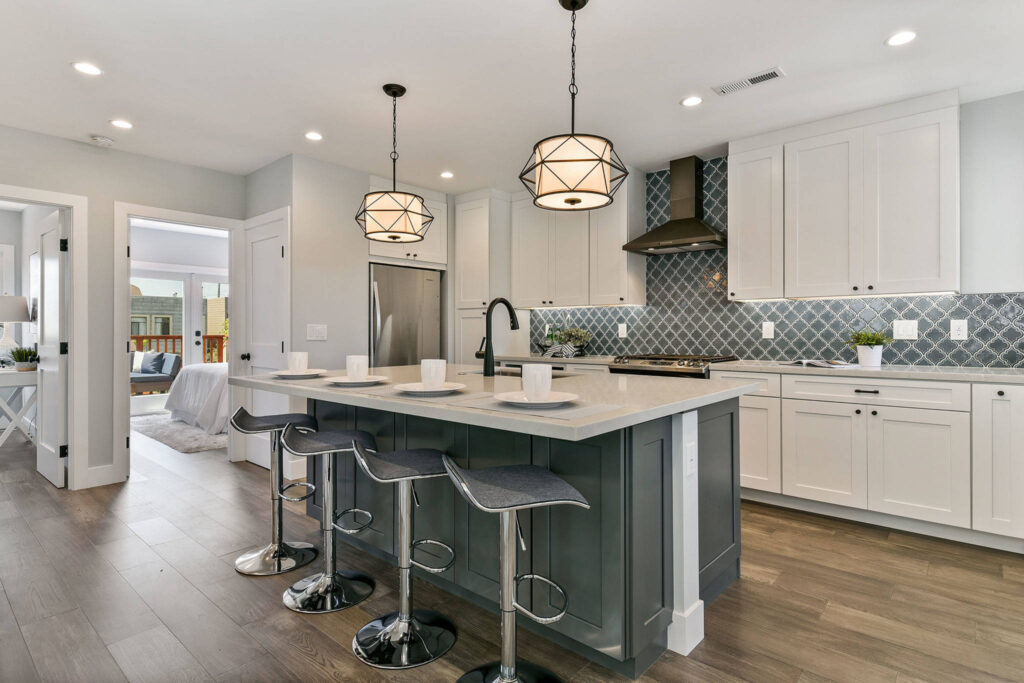
- All-Over Pattern: Cover the entire floor with arabesque tile for a bold and visually stunning look.
- Border Accent: Use arabesque tile as a border around the perimeter of the room to define the space.
- Inlay Design: Create a custom inlay design using arabesque tile to add a unique touch to your kitchen floor.
Countertop Charm
While less practical due to the grout lines, small areas of countertop can feature arabesque tile. Consider using it for a small coffee bar area, or as an accent around a sink.

Design Considerations: Balancing Style and Functionality
While aesthetics are important, it’s crucial to consider functionality when designing your arabesque tile kitchen. Here are some key considerations:
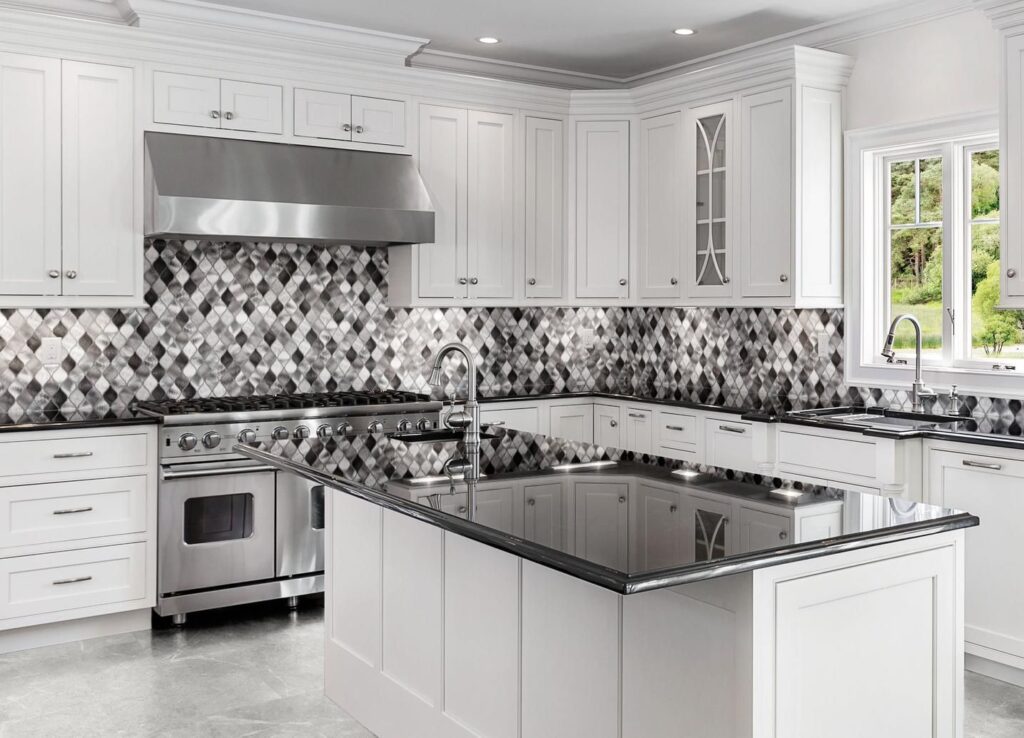
- Grout Selection: Choose a grout color that complements your tile and consider using epoxy grout for its stain-resistant and water-resistant properties.
- Sealing: Seal natural stone tile and grout to protect them from stains and water damage.
- Lighting: Ensure adequate lighting to highlight the beauty of your arabesque tile and prevent shadows from obscuring the intricate pattern. Under-cabinet lighting is especially effective for showcasing a backsplash.
- Layout: Plan the layout of your arabesque tile carefully to avoid awkward cuts or uneven patterns. Consider hiring a professional tile installer to ensure a flawless finish.
- Scale: Choose the right size of arabesque tile for your kitchen. Smaller tiles work well in smaller spaces, while larger tiles can make a larger kitchen feel more grand.
Installation Insights: Achieving a Flawless Finish
Proper installation is essential for achieving a flawless arabesque tile kitchen. While DIY installation is possible, it’s often best to hire a professional tile installer, especially for complex patterns or intricate layouts. Here are some installation tips:
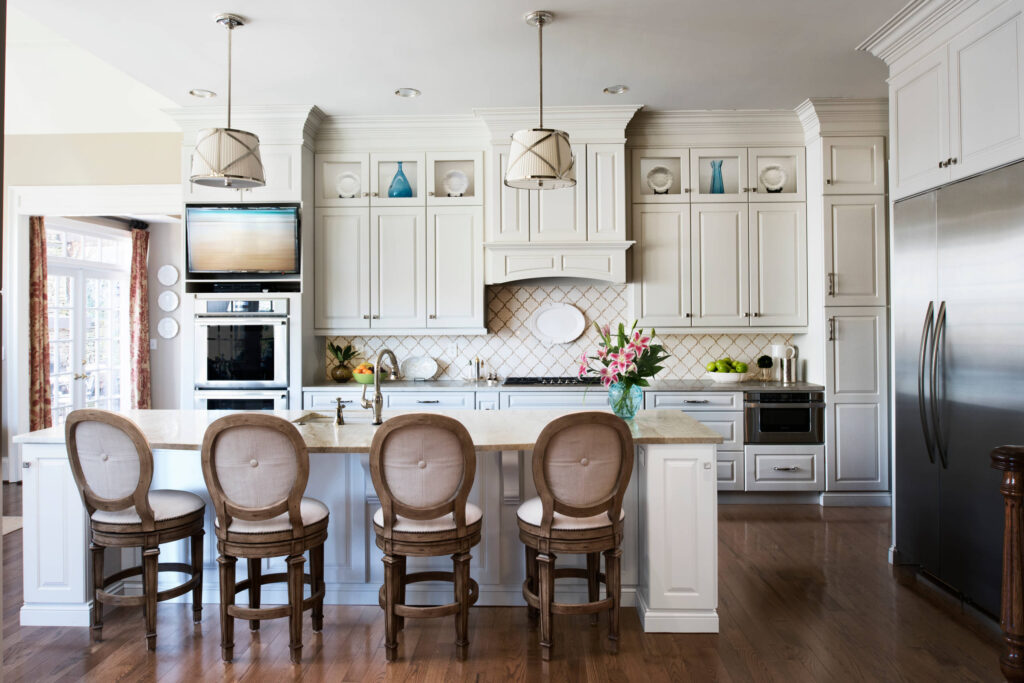
- Surface Preparation: Ensure the surface is clean, level, and properly prepared before installing the tile.
- Layout Planning: Plan the layout carefully to avoid awkward cuts or uneven patterns. Use a tile spacer to maintain consistent grout lines.
- Cutting Techniques: Use a wet saw to cut the arabesque tile accurately. For intricate cuts, consider using a tile nipper.
- Adhesive Application: Apply the adhesive evenly to the back of the tile using a notched trowel.
- Grouting: Allow the adhesive to dry completely before grouting. Apply the grout evenly and remove excess grout with a damp sponge.
- Sealing: Seal the grout and natural stone tile after the grout has cured.
Maintenance Matters: Keeping Your Arabesque Tile Sparkling
Proper maintenance is crucial for preserving the beauty of your arabesque tile kitchen. Here are some maintenance tips:
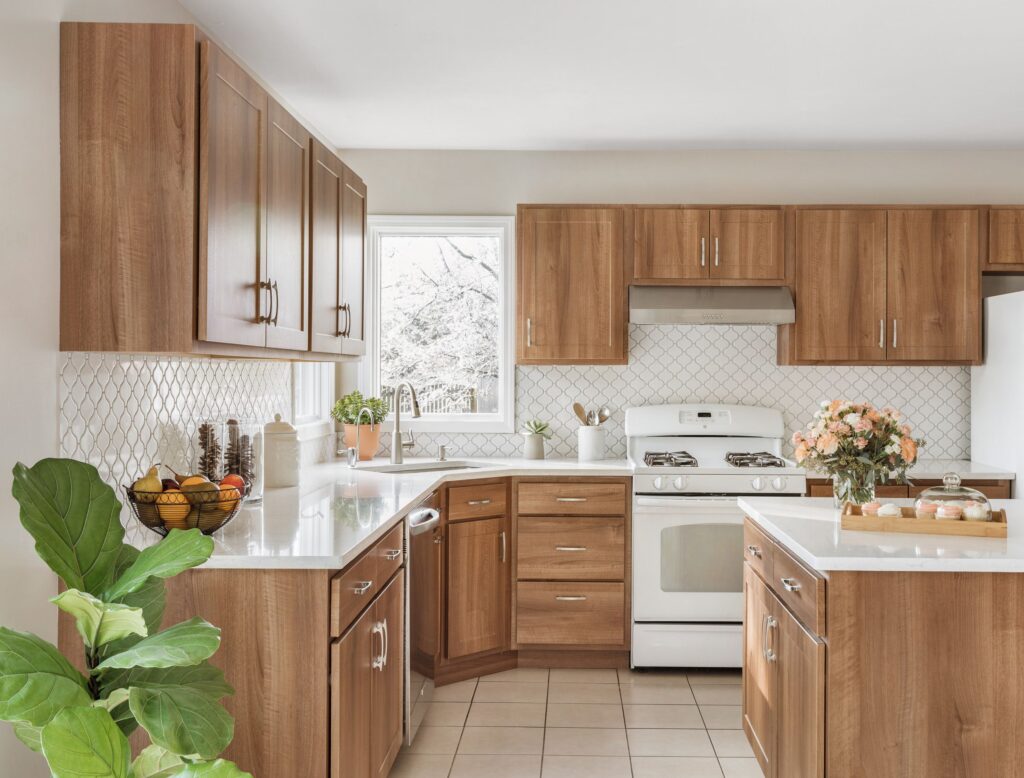
- Regular Cleaning: Clean your arabesque tile regularly with a mild soap and water solution. Avoid using harsh chemicals or abrasive cleaners, which can damage the tile and grout.
- Grout Cleaning: Clean the grout regularly with a grout brush and a grout cleaner. Consider using a steam cleaner to remove stubborn stains.
- Sealing: Re-seal the grout and natural stone tile periodically to maintain their protective barrier.
- Spill Prevention: Clean up spills immediately to prevent staining.
- Avoid Abrasives: Avoid using abrasive cleaners or scouring pads, which can scratch the tile surface.
Beyond the Kitchen: Other Applications for Arabesque Tile
While this article focuses on kitchen design, arabesque tile can also be used in other areas of the home, including:
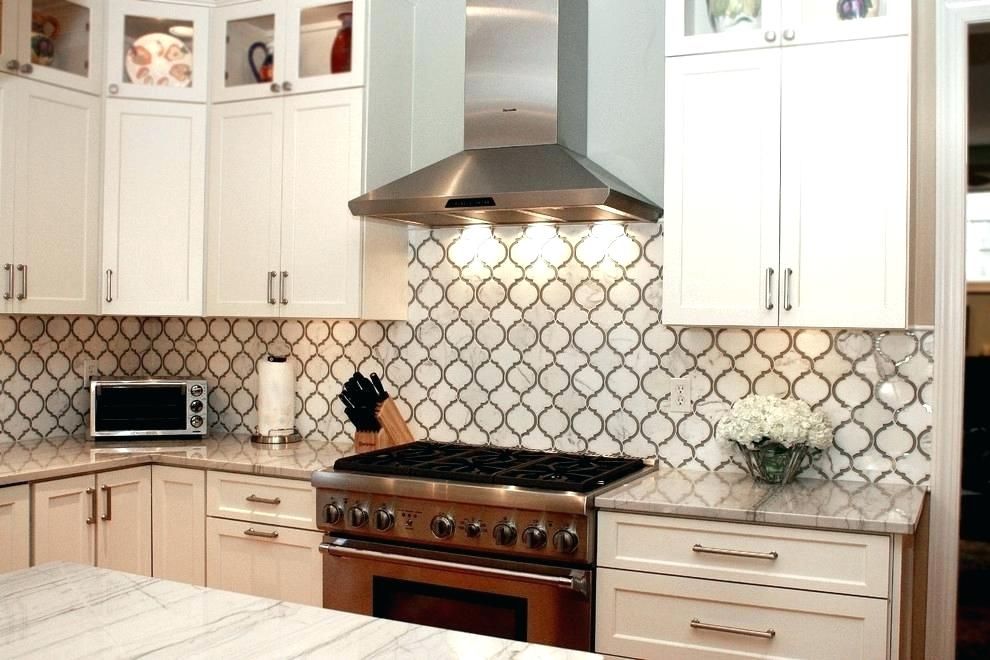
- Bathrooms: Arabesque tile is a popular choice for bathroom floors, walls, and backsplashes.
- Entryways: Use arabesque tile to create a welcoming and stylish entryway.
- Fireplaces: Add a touch of elegance to your fireplace surround with arabesque tile.
- Outdoor Spaces: Use durable arabesque tile to create a stunning patio or outdoor kitchen.
Conclusion: Embrace the Enduring Charm of Arabesque Tile
Arabesque tile offers a timeless and elegant way to transform your kitchen into a culinary haven. Its intricate patterns, versatile design options, and enduring appeal make it a worthwhile investment for any homeowner. By carefully considering the material, color, and installation, you can create a kitchen that reflects your personal style and enhances your culinary experience. So, embrace the charm of arabesque tile and create a kitchen that is as beautiful as it is functional – a space where memories are made and culinary creations come to life.
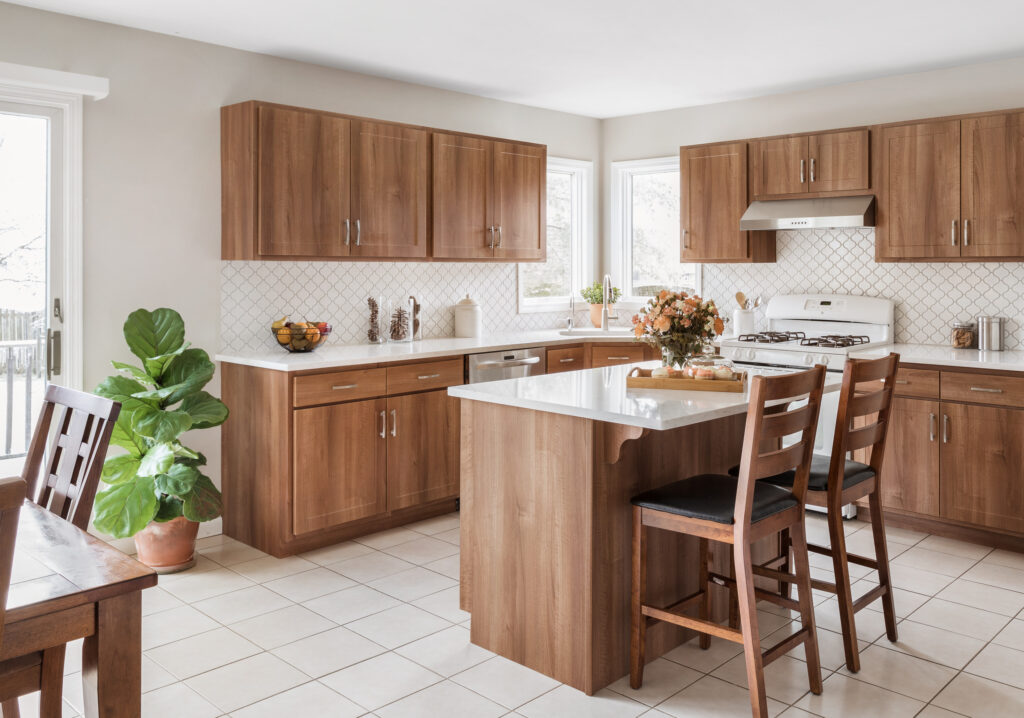
 Nimila
Nimila
